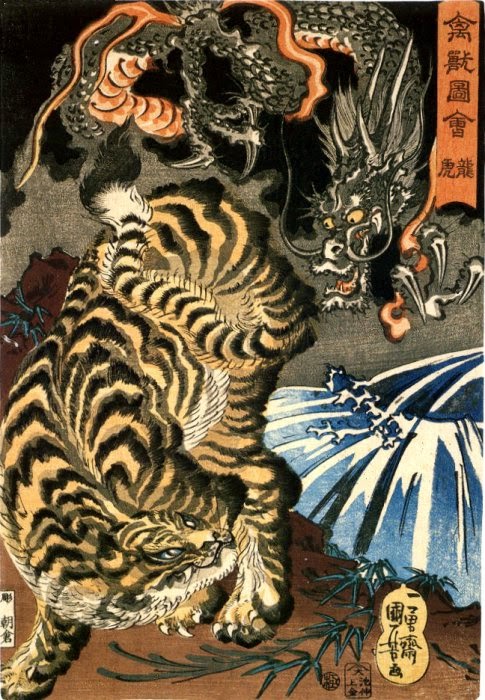The Tiger of Creation Science Continues Taming Dragons of Evolutionism
"Dragon" is an old word for dinosaur, and dinosaurs are pretty much extinct. Now the term "dragon" has become an illustration of fantasy or personal struggles, such as things that need to be faced and eliminated.
Evolution is not only a fantasy dragon in which people still believe, but it also transmogrifies. The concept of evolution is an ancient pagan religion, and began to take on scientific respectability in more recent centuries. The version that Darwin popularized had already changed shape before he joined the choir invisible. It seems that evolution's magickal transmogrification is accelerating, new speculations are refuted with facts and observations, so more speculations are offered as "science". Darwinoids constantly seek out creationists to attack, mindlessly calling anyone "liar" who dares to disagree with evolution and show evidence for creation, and then making excuses because reality does not fit evolutionary fantasies. Not to mention straw man arguments and outright misrepresentation of creationists... Yet, we still press on.
 |
| Kuniyoshi Project, Tiger and Dragon, Utagawa Kuniyoshi, ca. 1831 |
Do you know what happens to most mythical dragons? When people grow up, they stop bringing their dragons sealing wax and bits of string, and they stop visiting them in the autumn mist; reality replaces fantasy. Likewise, there are tigers — that is, numerous creation science ministries and individuals presenting information in hopes that little evolutionists will grow up and dare to face reality: Microbes-to-microbiologist evolution is false, and there is a Creator who makes the rules. The science is on our side, and we're still clawing and biting the mythical dragon that enslaves people.
Darwinism as a science has been evolving. That is, it has changed from its original concept and continues to change. It would do us well to pay attention to the latest trends so as not to be caught arguing against yesterday’s theory. When Charles Darwin initially postulated that all living species could be traced back to a single common ancestor, he suggested the mechanism causing these changes was natural selection. That was in 1859. Later, he backed off from his initial hypothesis and suggested that other forms of selection (e.g., sexual selection) were not only involved, but were more important. Worse, not knowing anything about genetics, he came up with and strongly promoted a Lamarckian idea that the environment caused changes in organisms which were then inherited by their offspring. This was contradicted by his contemporary, Gregor Mendel, who published the laws of genetics in 1862, but that was the state of evolutionary theory at the close of the 19th century.You can use the magic of the Web to keep reading "Slaying yesterday's dragons".